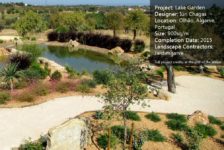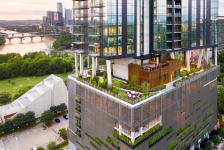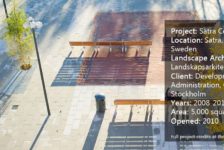Roller Coaster by Interval Architects, Beijing, China. Take an empty little courtyard in front of a school, a place where nothing interesting happens, and dream of a curved, elegant structure that can create a place to play, sit, walk, and talk … maybe you are sitting on a little roller coaster! Situated in Beijing, China, the roller coaster project was designed by Interval Architects, an international design practice founded in 2010. What the Client Wanted and What The Client Got The client’s first idea was to put a monumental sculpture in the middle of the square to represent the school. But that idea was not functional or useful. So Interval Architects decided to transform this empty square by putting in a contemporary open structure — a wooden ribbon representing the image of an urban roller coaster. The project solves the problem of creating a communal gathering space, but is also sculptural, like the school initially intended.
Share, Joke, Relax… In general, after children have been studying in school all day, their first thought is to go outside to play and relax. To speak, share, joke, and relax are fundamental parts of children’s development, and the landscape architect can help by creating spaces that encourage this. The roller coaster project, finished in 2011, snakes up and down on a total project area of about 1,200 square meters. It is designed as long structure folded into three dimensions with soft edges that, passing between sky and earth, become pavements, then benches, then covers.A Flexible Design
There are four different areas, allowing students to sit one in front of the other and socialize between classes. At the same time, the urban space of the square remains flexible so that the seating area for students can also be used as an outdoor exhibition area.
This unique, functional, environmentally friendly design consists of a snake steel structure with a top of eco-wood finishing. The timber walls have a louver system in between edges, filtering the sun and creating elegant shaded areas. Where there are no walls, a system of stainless steel tube support covers areas and contributes to the image of a “roller coaster”. Related Articles:- 30 Landscape Architecture Firms To Keep Your Eye On!
- Top 10 World Class Landscape Architecture Projects of 2013
- 10 Great Reasons to be a Landscape Architect
On the horizontal parts on the ground, some grass strips are planted. Inside and outside, little trees find the right sun exposure. The simple grass strips are designed in the center of the roller coaster to leave the lateral space for walking and sitting, providing a touch of minimalism.
The long benches are covered with eco-wood, and lights are installed inside the borders. The upper part of the structure and the ground level are totally balanced, giving a sensation of harmony. This project is fresh, contemporary, and, at the same time, not too big or bulky for the area; it doesn’t dominate the area, but leaves a lot of free space in the center for students, activities, lunch breaks, and free uses. It might be the perfect example of how to make landscape design for school open spaces, where architecture is a part of the project and helps to give an elegant touch, thanks to a few well-chosen materials. Interval Architects re-interprets architectural culture in Chinese cities and offers a new style for Chinese landscape architecture with this international and contemporary urban project. Recommended Reading:- Landscape Architecture Now! by Philip Jodidio
- Detail in Contemporary Landscape Architecture by Virginia McLeod
Article written by Maura Caturano Return to Homepage
Published in Blog











